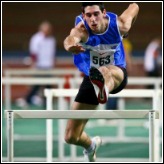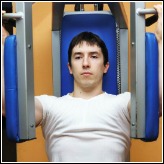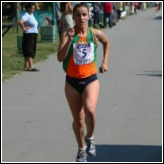Speed Agility Training
The phrase speed agility training either assumes that agility training can affect speed positively or you are a team based sport person looking for information to combine speed and agility training.
Either way, I have got something for you. Both speed and agility are neurological functions. By that I mean the nervous system play a large role in the efficiency of the body to function well while performing these skills.
When we look at competitive sports, the planet’s most accomplished athletes seems to move with such grace and poise, and as the saying goes, “it’s like watching poetry in motion”. That being said, we are not going to look with any depth into coordination training, but we do have to acknowledge and accept that you must be reasonably well coordinated before you can benefit from speed agility training.
Laying the Foundation
You have to be able to link several movement patterns together in a fluent way before you can begin to think about acceleration, deceleration and changes in direction at speed (all elements of agility). So the first part of any speed agility training program is to learn the key individual movement skills that you will later put together as an agility training session.
So, what are some of the prerequisite to agility training?
- Coordinated
- Balanced
- Strength (core, hip, feet, lower joints, eccentric/concentric)
Coordination
To be able to move quickly you have to be coordinated. Moving your limbs at speed takes a great deal of synchronization of various muscle groups to work in harmony. When this fails to happen, at best you just won’t get the best out of yourself- lack of power. At its worst, you will injure yourself due to the misfiring of muscle - a little like a car back firing.
Balance
Having the awareness of where you are in time and space is also a crucial skill for speed agility training. Being able to adjust your weight to make subtle changes to where your center of mass is positioned, which allows you to transfer force appropriately, is important to your ability to demonstrate agility.
Strength
To be agile, you need to develop multi-directional strength capabilities. You have got to be able to accelerate and decelerate your body quickly. This calls for good concentric and eccentric strength qualities. To change direction suddenly, you have to apply force to the ground. Therefore you need to have strong feet to get immediate feedback from the ground and minimize energy leakages. And of course all the stabilizers around the joints of the ankles, knees and hip have to be in good working order for any sudden changes in direction to be effective.
Having the 3 qualities above allows you to be reactive to any sporting situation and from there we have the birth of this thing we call speed and agility.
Here is an example of a drill which fulfils most of the criteria for coordination, balance and strength:
Side to Side Speed Lunges
- Set out 3 flat cones about 2 meters apart (be flexible up or down)
- Stand slightly to the right of the center cone, feet apart (your left foot should be in front of the center cone)
- Step quickly to the left with your right foot (back to the center cone) and as the right foot land, quickly move the left foot to the left in a lunge action toward the left cone and reach to touch the left cone with your left hand.
- From that position, drive the left leg back to the center cone and as it lands move the right foot to the right in a lunging action toward the right cone and reach to touch the right cone with your right hand.
- Repeat these actions for 10 seconds for power and speed or 20 seconds for a bit of endurance work.
Safety considerations:
Make sure the training shoe you use are not too built up – the sudden stop on the lunge segment of the drill can roll your ankles
Improving Your Speed
Well let’s examine some of the ways in which athletes can improve their speed.
In its basic and rawest form, if you want to run faster you should either:
- Improve your stride frequency
- Improve you stride length or…
- Both
However, here we are talking about speed of movement rather than speed across the ground. So the speed we are referring to here is speed training as it relates to the frequency part of the equation. We will not be referring to sprinting speed, which would call on us to make reference to stride length.
Improving your stride frequency depends primarily on two things:
- Neural Activation
- Technique
Neural Activation Training
Neural activation training not only improves the recruitment of muscle fibers but also improves the speed at which information is sent to and from the brain. Through training we can shorten the time it takes for a given action to take place. Activities which forces you to move your limb faster than you would normally, will improve your abilities to send and receive nerve impulses.
Once learnt, this ability propagates across the whole system. There is evidence which supports this idea of propagation. There are studies where athletes trained only one limb. At the end of the study they were able to demonstrate that the untrained limb improved in that skill also. This could only have been achieved via some sort of neural transfer from one side of the body to the next.
By training in this way you don’t have to sprint flat out. You can improve the rapidity of your movements through speed drills and transfer that neural improvement to the stride or movement frequency element of your speed program.
Technical Training
Technique as it relates to speed agility training is largely down to being balanced and making sure when your feet touch the ground you are able to immediately transfer force through your center of mass. Key to your ability to transfer force is to have your feet in a neutral position as it strikes the ground – toe up.
Sign Up For The Latest Track And Field News And Improve Your Athletic Performance!
From
"Speed Agility Training" Back To "Faster, Stronger,
Better – Your Shortcut To Improved Athletic Performance"
Learn more about speed training







